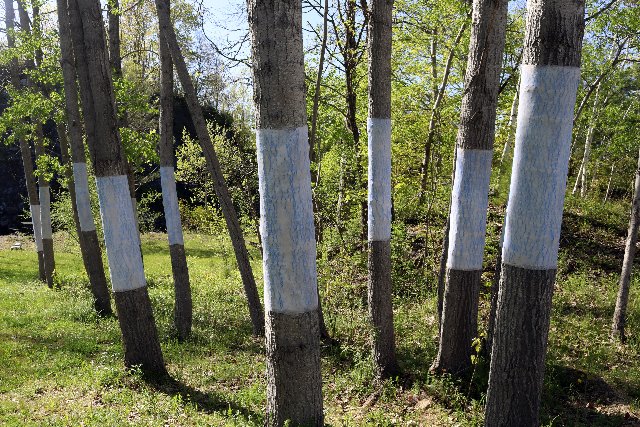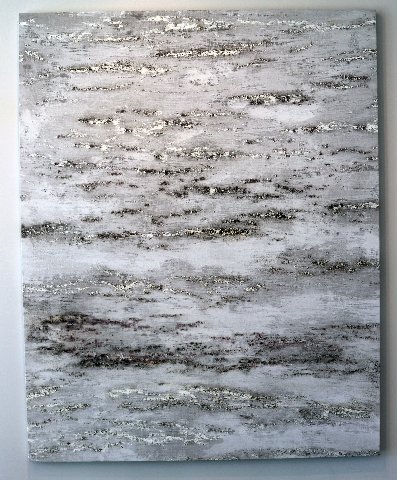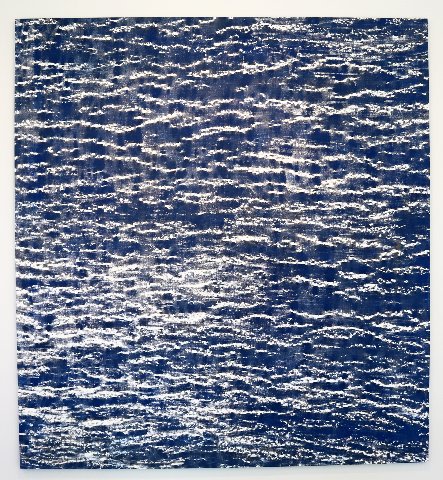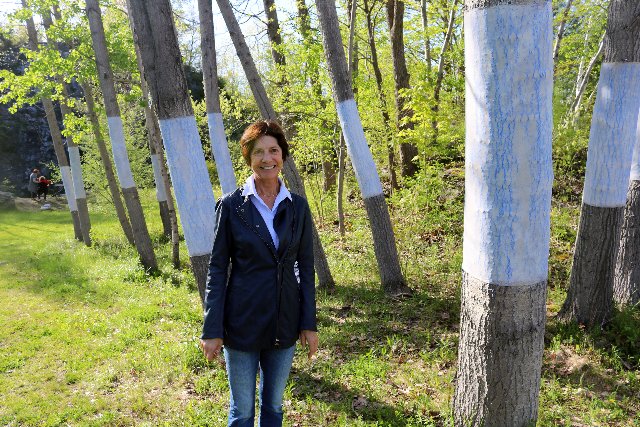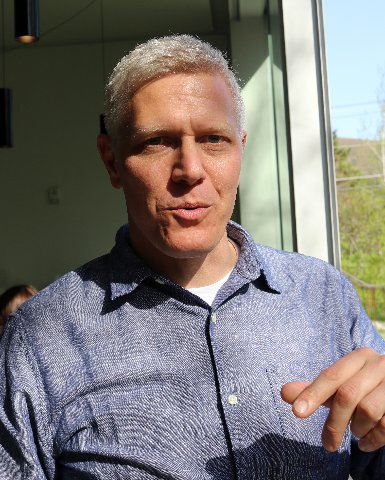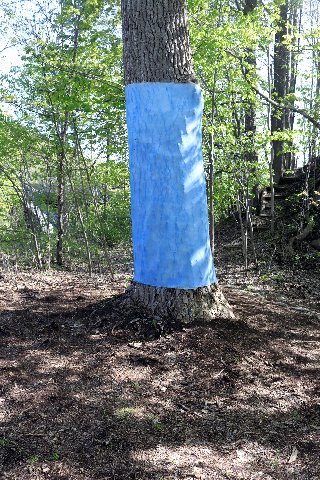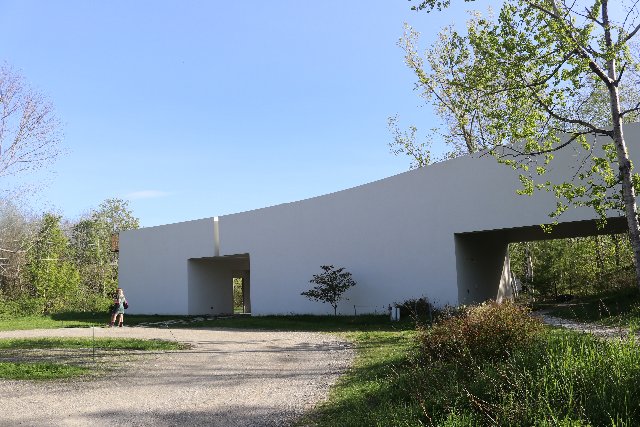Kathleen Jacobs’ Natural Abstraction
Echos at TurnPark Art Space in West Stockbridge
By: Charles Giuliano - May 19, 2019
Kathleen Jacobs
Echos
TurnPark Art Space
2 Moscow Rd, West Stockbridge, MA 01266
Open 10 AM to 8 PM, closed on Tuesday
Through October 31
At long last there was a glorious, sunny, balmy spring day. It was perfect for a scenic Berkshire drive from North Adams to West Stockbridge.
There was the added incentive of visiting an unfamiliar arts venue. TurnPark Art Space combines a simple, severe and geometric minimalist structure with a gallery and store. There are surrounding acres of sculpture and nature walks.
The complex was conceived by Moscow based sculptor/architect Alexander Konstantinov and was executed in collaboration with Art Forms Architecture principal Grigori Fateyev, who also curates the site and its programming.
With synergy and serendipity “Echos” by Kathleen Jacobs entails several minimalist, quasi-monochromatic paintings, as well as, primed canvases stapled to trees as ersatz sculptures.
The latter, which function as outdoor, three-dimensional, visual encounters are two-dimensional works in process. They are the aesthetic first steps of a creative journey intended to evolve over a year or more. A similar, earlier project took two and a half years of gestation.
While visually reductive the surfaces and their incremental development evokes the patination of exposure to the elements. The later phase in the studio entails the intervention, rubbing, and mark making of the artist.
This was our first experience of her work. We have known her as a polymath with many interests and skills. She spent years in Italy and China where immersion led to fluency in those languages. Kathleen has been a ski instructor and pilots her own airplane. Through travel she has a broad knowledge of biennials and art fairs with an interest in aspects of minimalism.
All of these resources and cultural insights inform the works on view and their unique developmental process. Key to the matrix of the work and its intentionality is a respect for spirituality grounded in nature.
Beyond tree hugging, on a more sophisticated level, she is a tree rubber. In a seemingly abstract, non objective manner she articulates the secret life of trees. The information is coded into the work. There are insights if you have time and patience to go beyond superficial observation.
There are high intensity works of art that have immediate and powerful impact. It doesn’t take long to “get” what they are about. Other work entails the long game in which their secrets and conundrums are revealed over a lifetime. It would be wonderful to live with one.
For four years the artist was married and living in China. She studied calligraphy and painting with her father-in-law, the renowned artist and poet, Huang Yong Yu. The training entailed making rubbings of ancient relief monuments.
In the studio she and other students learned calligraphy by copying complex inscriptions. Mastering the written language entails learning to make and read thousands of glyphs. The text of manuscripts are an art form. Since the middle ages that is a tradition that has disappeared from our culture.
As a child I learned penmanship in school. My handwriting has evaporated particularly when our society morphed into computer keyboards and smart phone texting. My mother, in unique script, wrote wonderful letters. Life drawing, and hand eye coordination, is no longer a part of art school curriculum.
These negative changes make the premise of Jacob’s work all the more insightful. It is possible to enjoy her work but not “get” it. Formalism is not the only approach to these “abstract” works. Rather than formalist or non objective it is more productive to regard them as abstracted from nature. They may look “abstract” but in fact they are not.
Several years ago, the process of rubbing and calligraphy/ mark making returned as an approach for her work. The tree as metaphor and reductive “abstract” painting are hardly unique but her style, technique and combination of forces certainly are.
Over the next few months, and before the seasonal site shuts down in October, we will return to West Stockbridge. There are other nearby galleries and restaurants to enjoy. Over the coming months the artist will be working on the tree pieces.
She will continue to visit this outdoor “studio” and develop the work. Typically, she rubs and enhances the natural irregularities of bark. She may remove and reattach the canvases to other trees to create more complex layering. It is also a mandate to work with different species of trees which entails a broad spectrum of potential surfaces.
The artist summers in the Berkshires and the canvases will endure a harsh Berkshires winter, or two. Nature will have its way with the wrappings. Perhaps birds and insects will leave their mark or ‘damage.’ All of these changes from elements to man made contribute to the life of the final work.
In the studio they are stretched and eventually displayed as paintings. There we bring as much or as little of ourselves to their contemplation. Given time, motive and opportunity they have the potential to overtake and consume you in a very nice way. There is no better surrogate manner to experience and endure the notorious Berkshire mud months.
Be sure to make hay, viewing this wonderful work, while the sun shines.

